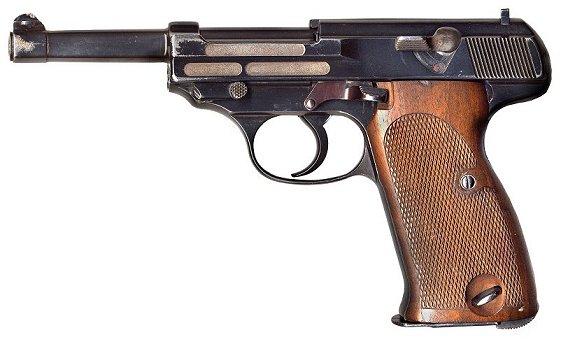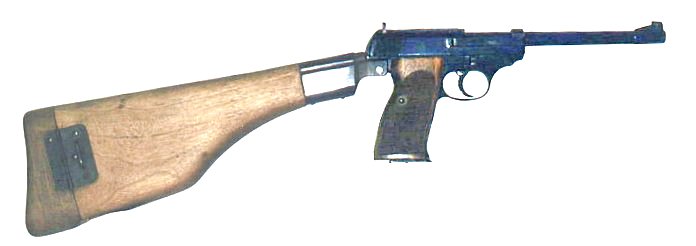

This is a very early example with a steel frame, which was found at the Walther factory in Zella-Mehlis in April, 1945. It was brought back as a War Trophy to the United States by an officer in Ordnance Technical Intelligence working for Col. George B. Jarrett. Col. Jarrett signed the "Capture Paper" which allowed the officer to take the pistol home.
Both men were assigned to Aberdeen Proving Ground at the end of the war, and Col. Jarrett became Museum Officer and Chief, Foreign Material Branch in November, 1945.

This identical pistol (by serial number) was photographed in December, 1945, at Aberdeen Proving Ground.
The following example is the only known Mod. AP to have been captured in combat. Warren Buxton was able to interview the GI who brought it back from WWII. It was found by two friends (who were members of a tank crew) on a German battlefield near the Rhine River in February 1945. It was on a German Paratrooper - who had no further use for it. It was still in a holster and was found the same as it is today - with the markings removed. After returning home, the GI used it as a car gun for some 50 years, before deciding to sell it.


Note that all markings have been professionally removed by a skilled machinist. We have no explanation why. No others are known.
The highest serial number known on a Mod. AP is 055, so it appears only about 55 were made.
Serial numbers 1 through 10 were equipped with shoulder stocks and long barrels (one short barreled example known - probably modified).
All others had 5" barrels. Most have steel frames, but a very few higher numbered pistols have experimental aluminum frames.
Most Mod. AP pistols (along with a lot of other unusual Walther pistols) were removed from the Walther factory collection by a United States Army Ordnance Technical Intelligence Team in April, 1945. Most of these were brought back to the United States and are now in advanced auto pistol collections around the world.

A Long-barreled example with original shoulder stock serialed in the 1-10 range.